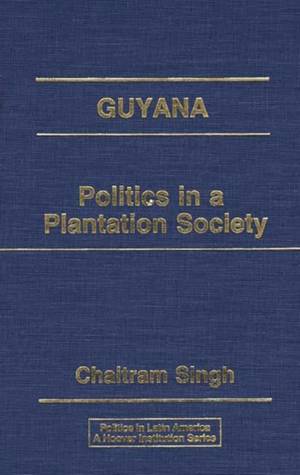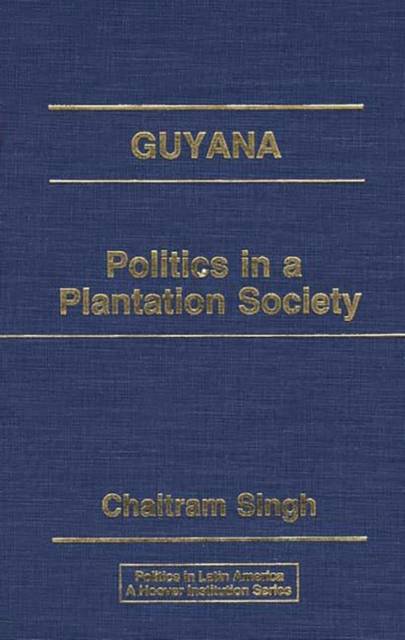
- Retrait gratuit dans votre magasin Club
- 7.000.000 titres dans notre catalogue
- Payer en toute sécurité
- Toujours un magasin près de chez vous
- Retrait gratuit dans votre magasin Club
- 7.000.000 titres dans notre catalogue
- Payer en toute sécurité
- Toujours un magasin près de chez vous
Description
This volume examines the politics and government of Guyana from World War II to the present. Professor Singh ably describes the downfall of a nation which, when it became independent in 1966, had good prospects, ample resources, and a relatively educated population. He examines how a liberal democracy succumbed to authoritarian tendencies, resulting in a defacto one-party state. Next, the author demonstrates how economic development became a casualty of over-centralilzed political and economic decision making. He argues that the persistence of underdevelopment in ex-colonies such as Guyana is traceable to domestic causes.
This volume examines the politics and government of Guyana from World War II to the present. Professor Singh ably describes the downfall of a nation which, when it became independent in 1966, had good prospects, ample resources, and a relatively educated population. He examines how a liberal democracy succumbed to authoritarian tendencies, resulting in a defacto one-party state. Next, the author demonstrates how economic development became a casualty of over-centralilzed political and economic decision making. He argues that the persistence of underdevelopment in ex-colonies such as Guyana is traceable to domestic causes.Spécifications
Parties prenantes
- Auteur(s) :
- Editeur:
Contenu
- Nombre de pages :
- 178
- Langue:
- Anglais
- Collection :
Caractéristiques
- EAN:
- 9780275929893
- Date de parution :
- 07-07-88
- Format:
- Livre relié
- Format numérique:
- Genaaid
- Dimensions :
- 160 mm x 243 mm
- Poids :
- 439 g







